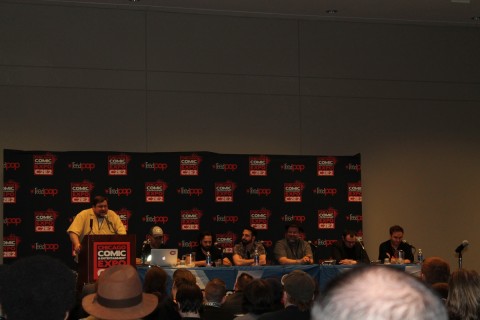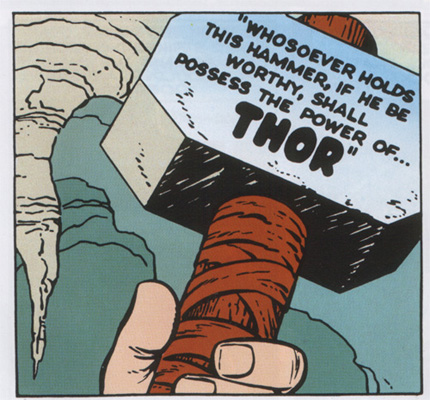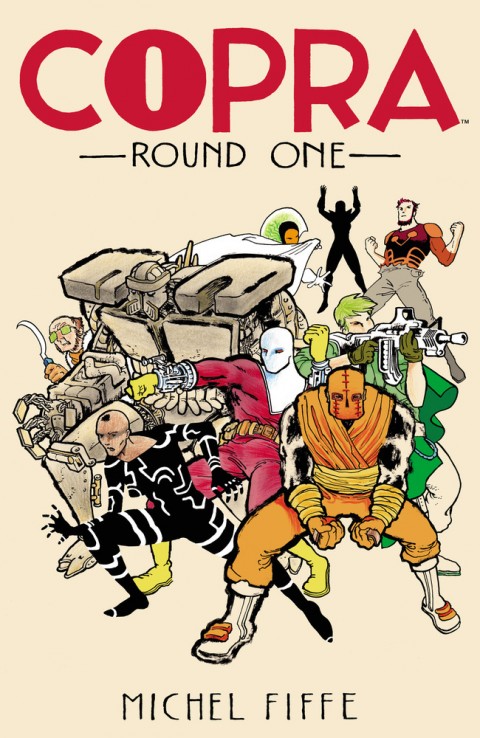One of the aspects of the comic book industry that you rarely hear about are pedagogy and mentorship. There is no clear path on how to hone your craft and break into the business, and many industry professionals care deeply about providing guidance and advice to the next generation of comic book artists, writers, colourists, and editors. It is one of the best aspects of the industry and there is a great sense of ‘paying it forward’, that is, many artists and writers were helped by someone when they were younger and now that they are in a position to provide advice they see it as a duty.
I had the pleasure of attending Marvel’s Breaking Into Comics the Marvel Way panel at C2E2 this year and got to see firsthand the dispensing of invaluable advice. The panel was hosted by C. B. Cebulski, Marvel Comics Senior VP, Creator & Content Development, who alternated between providing excellent advice himself (many took notes) and asking questions from the panel, which consisted of Tom Breevort, Marvel’s Executive Editor and Senior VP of Publishing, Arune Singh, Marvel’s Director of Communications, and artists Shawn Crystal, Ramon Perez, Declan Shalvey, and Ryan Stegman.
Each panelist told their own, unique story of how they broke into the business. They drove home for the audience that each person’s journey is different and no two people will find success in the same way but there are some consistent themes that occur. Passion for the craft, hard work, and long hours were common for everyone. The artists all worked day jobs and drew for hours after they got home.
There was no sugar coating of the road ahead. This is going to be hard work, but the path is a little more clear for artists. Once you build up a portfolio you are able to submit your body of work through a portfolio review at a convention. Artists were cautioned that a portfolio should have more than action shots. It should be quiet moments, smaller shots, large panels, displaying a mix of themes, moods, and ranges of your work.
Writers have a harder road. You can’t really show a writing portfolio. Writers should write their own comic and then find an artist to draw it. Then they should get it published (by themselves if necessary) to have an actual physical copy of something to show an editor.
For editor and executive jobs internships and networking were an important way to break into those fields, but even then an internship is no guarantee of success at breaking in.
Compared to other industries, I find it surprising and overwhelming how pedagogy and mentorship is so deeply ingrained as part of the comic book industry. I’ve seen creator after creator look at someone’s work and give advice and pass on years of wisdom because someone did it for them. Comic creators believe in returning kindness and helping aspiring talent.
While some will say that such aid to rookies is far from altruistic, I would mention that I can think of no other creative industry where this is a built in aspect of finding and retaining new talent. Sure other industries like film or music have ways of being discovered, but these industries do not have the close personal connection that can be achieved at a comic convention portfolio review.
A lot might be written about how tough, cruel, or soul-crushing the industry is (and it can be all those things) but I have also seen the very best in people. The drive and desire to teach, to instruct, and to aid is pervasive and I’ve seen it demonstrated time and time again. When I see a creator take time to look at someone’s portfolio I’m reminded how the industry is filled with talented and caring individuals.
Any aspiring creators should not feel shy and talk to your favourite artist or writer at a con. You will be glad you did. And once you make it big remember to do the same for your fans.





One common theme of that Marvel history book I told you about: how many of the great, respected creators or the Golden, Silver, and Bronze Ages got into comics by accident, or through some chance connection (like a mutual acquaintance), or originally as a “side job”, or because they happened to be around when Stan needed something done in a rush. One of them, Roy Thomas I think, was actually a letter-writing fan who dropped by “the bullpen” to meet his idols, and was offered a job. I wonder if something like that could ever happen these days!
From a lot of the stories I heard it seems that people worked hard on their craft all the time, and then put themselves into situations where they can take opportunities. Roy Thomas is a great example. He wrote and drew his own comics from when he was a kid. And he was already an assistant to Mort Weisinger (editor for Superman) when he wrote Stan Lee the letter. So while it is true that he just wrote Stan Lee a letter to get a job, and that he was a fan, he also had been practicing his craft for years at that point.